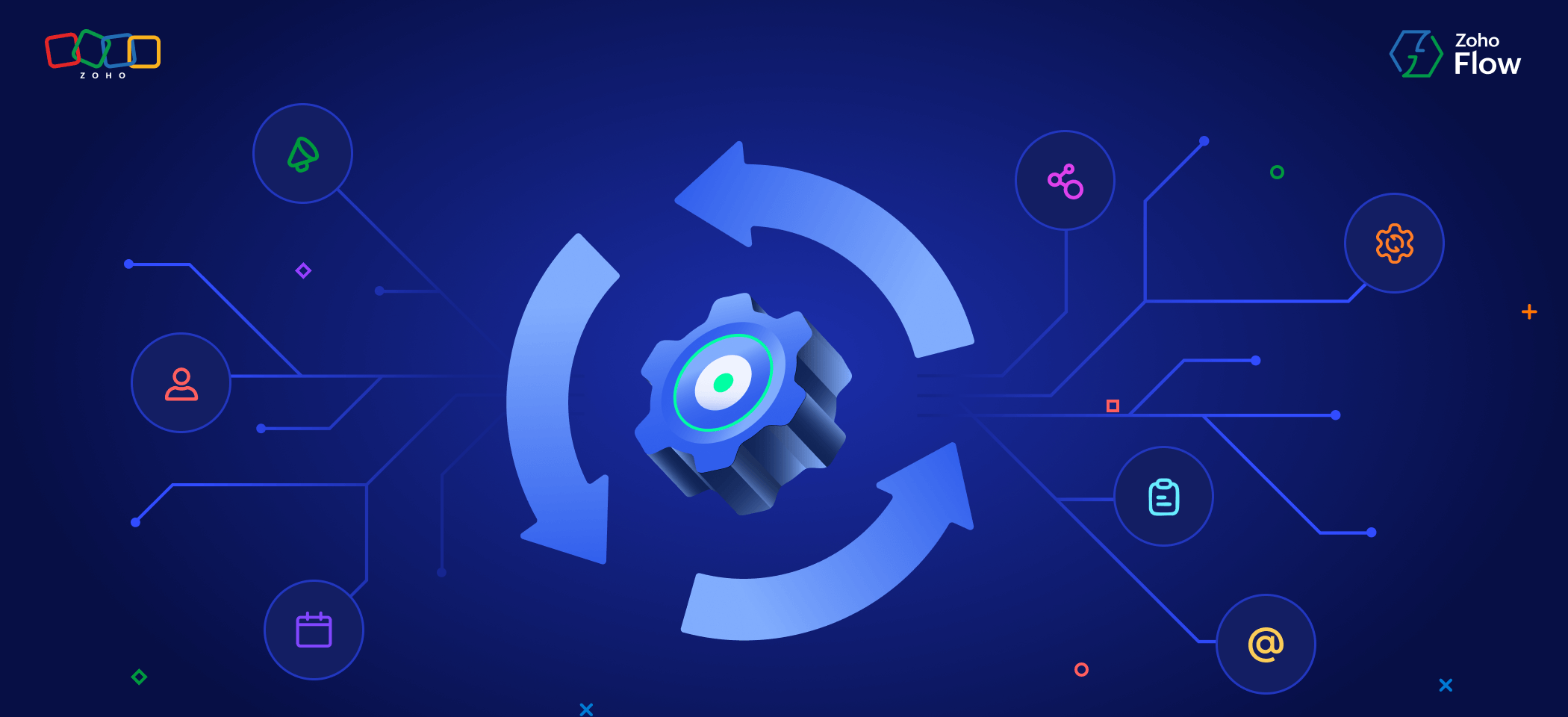7 useful workflows to automate your email marketing
- Last Updated : November 11, 2023
- 1.9K Views
- 6 Min Read

Whether your business is in its infancy or already established, email marketing is still one of the most effective digital marketing channels available today. When it comes to sending out new and exclusive content, newsletters, company updates, and collecting feedback, email campaigns are your best bet. Email is, and is predicted to be, an integral part of the global daily online life for many years to come. In 2020, the number of global email users was around 4 billion, and is predicted to grow to 4.6 billion in 2025.
Delivering the right message at the right time is key to a successful email campaign. To connect well with your audience, you need to define your audience, segment them, and send out unique content that will engage them.
Apps like Zoho Campaigns, Mailchimp, and ActiveCampaign provide you with great tools to create the right emails for your campaigns. They also come packed with a host of useful features such as subscriber management tools, A/B testing, predesigned email templates, and more. But sometimes, copying and managing email lists, especially when you have sources from a dozen applications, is challenging.
The good news is that you can employ an integration platform like Zoho Flow to do all that work for you, just the way you want it! Zoho Flow allows you to connect hundreds of applications together and build automated workflows around them, so you can save time and focus on what's important for your business. To automate email marketing in your organization, all you need to do is employ workflows in Zoho Flow by connecting your email marketing application with your favorite apps.
What can you automate?
The following examples are just some of the numerous workflows that may be eating up your valuable time but can be totally automated:
1. Add leads as subscribers to your newsletter
Lead generation is important for any business. However, with the number of applications acting as sources for leads rising every year, it's a difficult process managing and exporting all those lists. Whether it's a lead from an online form response, a worksheet, or an email, you don't need to spend your valuable time copying and pasting or exporting them to your email campaign app. All you need to do is to set up workflows in a way that whenever new leads are created in your source application, the corresponding details are added as contacts in your subscriber list. You can set up multiple workflows so that leads coming from different applications are automatically added to your required lists.
2. Add or update contacts in your CRM
CRM applications are the core of sales and marketing for a business, but keeping its contact list up to date is a laborious activity. Rather than manually exporting contacts all at once, you can use an integration platform to sync newly created contacts whenever they're created. It makes it easier to create new contacts in your CRM whenever a new subscriber is added to your email list. If the contact already exists, then its details will be automatically updated rather than creating a new contact—keeping your CRM contacts updated throughout while avoiding the creation of duplicate entries.
3. Add your event registrants as contacts
We know that you need to put a substantial amount of effort into conducting events. It's a great way to take your business to new audiences and to engage your existing customers. Moreover, webinars and online events have become the new normal. Be it a physical event or an online one, you not only need to engage them during the event but also well after it's over.
However, there are ways in which you can automate repetitive tasks that take up your valuable time. For example, you don't need to worry about managing the attendee contacts for your newsletters, as it can be automatically performed using an integration platform. You just need to connect your event management application—say EventMobi, GoToWebinar, or Eventbrite—to your email marketing application using Zoho Flow. You can then configure a workflow to add a contact in your email marketing application whenever a new registrant or attendee is created in your event management application.
4. Add your ecommerce customers to your mailing list
If you're running an online store, you need to ensure that your customers are receiving updates on a regular basis. It can be product availability updates, product news, new deals and offers, or feedback requests. This will keep them visiting your store and turn them in to loyal customers. However, manually adding new customer information to your mailing list takes time.
To automate this, you can create a workflow to add contacts to your mailing list whenever you have a new customer in your ecommerce store application, like Shopify or CloudCart. Zoho Flow also supports WordPress plugins, such as WooCommerce, so you don't have to worry about multiple automation platforms!
5. Store and track campaign records regularly
You've worked hard on creating the perfect email campaign. Now you need to keep track of its results and also store select information in a worksheet for analysis. While most email automation applications have built-in dashboards with analysis, you might also want to use spreadsheets for the sake of simplicity and customized analysis. However, moving data manually to spreadsheets can be painful.
To get this process automated, just create a workflow such that triggers on a regular schedule, fetches the reports of your required campaign, and adds the information you want to your selected worksheet. You can even add conditions in your workflow to categorize the results the way you want. And there's even more. You can also connect an email or a messaging application to your workflow to receive notifications whenever a field in the report, like your click count or bounce rate, crosses a specified value.
6. Add your new WordPress users as newsletter subscribers
WordPress powers almost 39% of all websites on the internet and maybe your business website as well. As your user base grows, it becomes increasingly difficult to keep track of new users and add them as subscribers to your mailing list. To alleviate this, you can automate a workflow in a way that every time a new WordPress user is added, that contact is added as a subscriber to your newsletter. You can also customize this workflow to create separate mailing lists for separate occasions. For example, you can send personalized emails for birthdays, upcoming subscription expirations, personalized promotional offers, and more.
7. Follow up and collect feedback from unsubscribers
When you have a long list of subscribers, a small number of unsubscriptions are expected. A slight increase or decrease in the rate of unsubscription isn't necessarily associated with the quality of your emails. Perhaps one of your emails has solved their problems, or their job roles may have changed, among numerous other possibilities. However, it's important that you stay informed of why your subscribers unsubscribe.
The best way to learn this is to simply ask for feedback, and possibly reengage with them through a follow-up email. You can use a standard template for this email, and you don't need to spend time finding unsubscribers and sending them emails. You can set up a flow in a way that whenever there's a new unsubscription, a follow-up mail is sent to them automatically. You can customize the contents of the email to make it more personal, as well as add a delay in sending the mail from the time of unsubscription.
While these are the most common ways to automate your email marketing efforts, there are hundreds of other ways to automate workflows specific to your business. Automating repetitive tasks not only makes it easier for you to focus on what's more important, but also greatly reduces errors that could creep in. You can also try automating other areas of your marketing to make automation even more effective in your organization!
If you'd like to know more about Zoho Flow, we can even help you set up automated workflows. Just write to us at support@zohoflow.com!
 Arjun
ArjunProduct Marketer at Zoho Flow: Passionately curious, with a love for thinking, writing, and exploring creative ways to connect people with science and technology.


